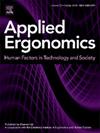Systematic review of electrical worker competency interventions: A systems-thinking perspective
IF 3.4
2区 工程技术
Q2 ENGINEERING, INDUSTRIAL
引用次数: 0
Abstract
Around the world, electrical industries implement various systems of regulation to control the inherent risks of working with electricity, including worker licencing. However, being licensed and being competent are not synonymous. Electrical worker competence, specified in this study as including skills, knowledge and attitudes, is crucial to ensuring worker safety. This paper details the results of a systematic review exploring the characteristics and safety outcomes of electrical worker competence interventions. The results are then mapped onto a systems-thinking framework, PreventiMap, to explore the breadth of electrical competence interventions across system levels and what relationships, if any, exist between interventions. Eighteen articles met the inclusion criteria and were included in the review. The methodological quality of the included studies was assessed using the Downs and Black checklist. The PreventiMap showed a predominance of worker competence interventions at the frontline worker. Of the 25 identified interventions, only 2 were mapped in levels outside the frontline worker system level. The quality of the included studies was low reflecting the challenges faced by effectiveness studies of complex interventions in workplace settings. Consistent with previous research, the results of this study highlight electrical worker competency interventions as being reductionist in nature; focusing primarily on the frontline worker level, and with minimal focus on relationships between interventions at different system levels. Accordingly, recommendations are made for research investigating the vertical integration of interventions, particularly those that include interventions at higher system levels.
电力工人能力干预的系统回顾:系统思考的视角
在世界各地,电力行业实施各种监管制度,以控制与电力有关的固有风险,包括工人执照。然而,获得许可和有能力并不是同义词。电业工程人员的胜任能力(在本研究中指明为包括技能、知识和态度)对确保工人安全至关重要。本文详细介绍了一项系统综述的结果,探讨了电业工人能力干预的特点和安全结果。然后将结果映射到一个系统思考框架,即预防地图,以探索跨系统级别的电能力干预的广度,以及干预之间存在什么关系(如果有的话)。18篇文章符合纳入标准,被纳入本综述。采用Downs和Black检查表评估纳入研究的方法学质量。预防图显示了一线工人能力干预的优势。在确定的25项干预措施中,只有2项在一线工作人员系统层面之外的层面进行了映射。纳入研究的质量较低,反映了工作场所复杂干预措施的有效性研究所面临的挑战。与以往的研究结果一致,本研究的结果强调电业工人胜任力干预本质上是还原主义的;主要关注一线工作人员层面,而对不同系统层面的干预措施之间的关系关注最少。因此,对调查干预措施的纵向整合,特别是那些包括更高系统级别干预措施的研究提出了建议。
本文章由计算机程序翻译,如有差异,请以英文原文为准。
求助全文
约1分钟内获得全文
求助全文
来源期刊

Applied Ergonomics
工程技术-工程:工业
CiteScore
7.50
自引率
9.40%
发文量
248
审稿时长
53 days
期刊介绍:
Applied Ergonomics is aimed at ergonomists and all those interested in applying ergonomics/human factors in the design, planning and management of technical and social systems at work or leisure. Readership is truly international with subscribers in over 50 countries. Professionals for whom Applied Ergonomics is of interest include: ergonomists, designers, industrial engineers, health and safety specialists, systems engineers, design engineers, organizational psychologists, occupational health specialists and human-computer interaction specialists.
 求助内容:
求助内容: 应助结果提醒方式:
应助结果提醒方式:


